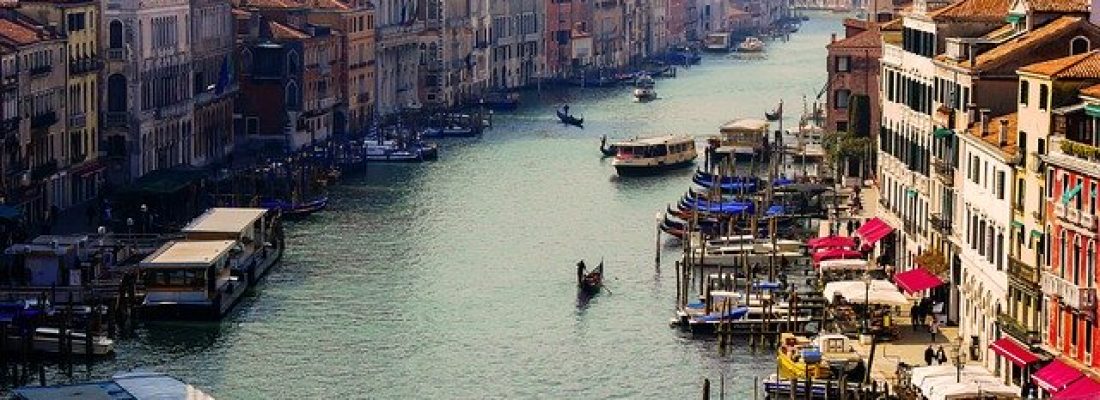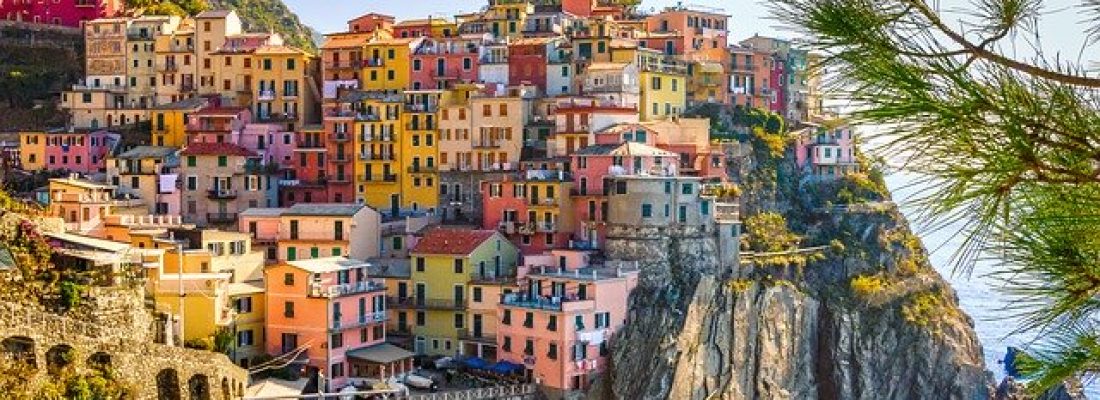If you have been to Italy before, then you probably know that this incredible country always leaves travelers wanting more. Italy possesses Europe’s richest and craziest culture and is said to be the nation that cradles the European civilization.
Italy’s great food, lovely countryside, fabulous wine selection, and long history make it an excellent country to visit at all times. Whether you are looking for history, architecture, stunning scenery, quaint local towns, or mouth-watering food, Italy is sure to deliver.
Many who have traveled here before say that Italy is best seen slowly and fully, so make sure that you don’t rush or try to do too much while traveling here. Take a moment to relax, enjoy the scenery, and savor a latte in the center of Rome. There is so much to see and do in Italy, and visiting just a few big cities, no matter how popular they are, doesn’t do it justice.
In this guide, we will offer you a collection of some of the best things to do while in Italy, the most desirable places to stay and provide you with the best travel tips and advice.
Tourist Information
Language
Italian is the main language spoken.
Currency
The currency that is used in Italy is known as the Euro.
Climate and Recommended Time to Visit
There’s no wrong time to visit Italy, but if you’re searching for the cheapest time to come, then arrive in the winter, between the months of December to March. The chilly weather keeps most travelers at bay, but on the bright side, you can wander the country’s incredible museums and galleries to your heart’s content, or even attend some of the popular Christmas Markets.
The peak season for travel to Italy is between July and August, but June can sometimes be busy as well. Summer hits Italy from June to August, and temperatures can soar as high as 100ºF (38ºC). Popular cities like Rome and Florence experience a huge wave of visitors and due to this, prices increase during this time as well. Regardless of this, the overall atmosphere and weather are great during this time, so it’s still worth visiting during peak season.
However, hands-down, the best time to visit Italy is in the spring and fall, from March to May and September to October. The weather during these months is still mild, there aren’t as many crowds and prices are cheaper. Plus, the spring and fall is an especially great time to hang out on the Mediterranean.
Top Attractions and Must-See Sights

Rome
Rome is one of the most iconic and most traveled to cities in all of Europe, with a long history and mix of cultures from around the world. Roam the cobblestone streets with a delicious gelato in hand, spend some time solely observing people go by from the Spanish Steps, or take in all of the stunning architecture the city has to offer – you can do it all.
Rome is also known to most as a foodie’s heaven. This popular city offers everything from world-class cuisine to casual trattorias, to take away pizzas that will make your heart sing.
Pantheon
The Pantheon, which is an exceptionally well-preserved relic from Roman times, reveals the most incredible architectural achievements that the Roman Empire offered. The stellar proportions of the building, with the height equal to the diameter, and single beams of light penetrating the room from the top of the dome, give the Pantheon a memorable character.
The Colosseum and Roman Forum
Rome’s Colosseum, which we’re sure many have heard of, is the world’s largest and most visited Roman arena. This sizable amphitheater, which was built by Emperor Vespasian in AD 80, held as many as 55,000 spectators. Deadly gladiatorial and wild animal fights were often held in the Colosseum, but it was mostly used for other events as well. Pillars, partial structures, and foundations of former temples, market halls, courts, and public buildings still stand, paying tribute to Ancient Rome, which stood here for a thousand years.
A ticket to the Colosseum additionally includes an entrance to the Roman Forum and Palatine Hill, which are located near to the Colosseum, among Rome’s top ancient sites.
Venice
If you imagine strolling down quaint alleys or eating genuine gelato while window shopping for Italian leather handbags, Venice would-be city to visit. Whether you wish to visit the Basilica di San Marco, located in the heart of the Piazza San Marco, the Rialto Bridge, or the Ponte Dei Sospiri, there are endless amounts of history that can be learned and discovered within this magical little city.
Venice is a city of islands, with its canals taking their place as main roads. Surrounding the canals are aged buildings that have remained relatively unchanged for hundreds of years, adding to this city’s romantic charm. The Grand Canal, which is known as the most famous and most photographed waterway in Venice, is one of the best ways to see many of the grand palaces that face the river.
The Venice Carnival is yet another thing that shouldn’t be missed while visiting Venice. This carnival lasts ten days and nights, filled with masquerade madness, right before Lent. This tradition goes back centuries and is said to be one of the biggest parties and festivals in Italy. If you have the funds, you can even pay to attend a traditional masquerade ball as well. It’s best to make plans early though because the entire city becomes packed and very expensive, so it will definitely change your Venice experience.
The Leaning Tower of Pisa
Most often visited by tourists wanting to see or climb the famous leaning tower, which is one of Italy’s most well-known attractions, Pisa is a great choice for exploring. In order to get to the top, you will have to climb almost 300 steps, but it is well worth the climb.
Other monuments that should be visited along with the tower are the nearby white marble cathedral, which was built in the 12th century, for a bell tower, making it the largest in Italy.
Keep in mind that the souvenir shops found at this attraction have taken advantage of the tourist crowds and line the street path to the tower, so the best advice is to keep your head down, take a quick photo, and head onto your next adventure.
Ancient City of Pompeii
The Roman city of Pompeii was known for getting buried by an eruption from the Mount Vesuvius volcano in 79 AD and now gives travelers a good look at what an ancient Roman city was like. The site includes villas, baths, shops, an arena, temples, and the Forum. Because there’s so much to see, it’s best to spend several hours wandering around.
Pompeii can easily be visited as a day trip from Naples or from Sorrento and the Amalfi Coast. The train station in Pompeii is a short walk from the excavations, but if you’d like to visit Pompeii from Rome, then you should consider a guided day trip with transportation tours.
Vatican Museums and Sistine Chapel
One of the world’s most visited museums, bringing in more than 6 million visitors in 2014, is the Vatican Museums complex, which includes the legendary Sistine Chapel. Although technically not in Italy but in Vatican City, it’s the most visited museum by tourists when traveling through Rome.
The museum is enormous and usually crowded, so be sure to expect to spend at least several hours here, and do a little research beforehand so you know exactly what to look for while in the walls. You should buy tickets in advance or even book a tour prior to visiting, so you don’t waste time in the ticket line. Sometimes, the best time to visit is before tour hours, which leaves minimal crowds.
Lake Como
Lake Como is said to be one of Italy’s most scenic areas and is surrounded by mountains and charming towns. Since Roman times, this lake has many wealthy villas and palaces along its shores, and additionally, many of them contain gardens that are open to the public. These gardens are popular among tourists because their characteristics are similar to that of the Mediterranean.
Amalfi Coast
The Amalfi Coast, a UNESCO World Heritage Site, is one of the most talked-about stretches of coastline throughout the whole world. With hillside towns built along the steep mountainsides that cascade down to the sea, traveling here will give you dramatic views of the best Italy has to offer. The main towns along this coast are Positano and Amalfi, and visitors can tour the coast by road or hop between towns from the sea, for different perspectives of the dramatic and almost vertical shore.
Florence Duomo Santa Maria del Fiore
There’s no widely known reason to go here except for the great food, amazing museums, ancient buildings, small streets, and awesome gelato!
Florence’s Cathedral, the il Duomo di Santa Maria del Fiore, tops the list of things to see in Florence because it’s regarded as one of the finest cathedrals in the world and overlooks the city’s skyline.
This cathedral was built between the 13th and 15th centuries, but its most famous piece being the extraordinary dome, completed by Filippo Brunelleschi in 1434. The cathedral’s bell tower stands close to the cathedral found in Piazza del Duomo, covered in the same patterned marble, which is typical of the Tuscan Romanesque architecture style.
In order to see the done, visitors must first purchase a ticket, and then climb the 436 stairs to the top for fantastic views of Florence.
Cinque Terre
Cinque Terre, a lovely coastal region with steep hills and sheer cliffs, overlooks the Mediterranean and gives travelers picturesque views. These five scenic villages, Monterosso al Mare, Vernazza, Corniglia, Manarola, and Riomaggiore, can be reached by various means. You can travel to each by taking the walking paths, a railroad, or a scenic road that loops on the hillside above.
Hiking between the villages is one of the most popular things to do as it gives travelers the chance to enjoy the landscape in their own time without the confines of a bus or train. The small towns have maintained a feel of old-world fishing villages and offer travelers a sense of remoteness even in the face of modern tourism.
The Uffizi Gallery
Known as one of the world’s leading art museums, the Uffizi is a knockout when it comes to learning about the history of Italian Renaissance art. It contains works by some of the great masters of western art, and its greatest asset is its collection of paintings, showing the step-by-step evolution of painting that transpired here from during the 14th to 16th centuries. At this gallery, you will see the first experiments with perspective art, as well as some of the early portraits leading painters beyond religious art or even some of the first uses of naturalistic and scenic backgrounds. Botticelli’s Birth of Venus is also on display here.
Milan Duomo
Milan’s magnificent Cathedral of Santa Maria Nascente, “Il Duomo” to the locals, is one of the world’s most considerable churches and probably one of the best examples of the flamboyant Gothic style. Its exterior has a whopping total of 2,245 marble statues and 135 carved stone spires that complete its roof. These features give it quite the first impression. This is then reinforced as you step inside, with fifty-two immense pillars supporting the soaring ceiling of the nave, decorated walls, and some of the world’s largest stained glass windows.
Highlights found here are the tomb of Gian Giacomo Medici and a 12th-century bronze candelabrum. Below the lofty altars are the crypt and the octagonal chapel that’s filled with the gold reliquary of San Carlo Borromeo. Under Piazza del Duomo, only to be reached by stairs near the entrance, are the foundations of a fourth-century baptistery and basilica. If you wish to head to the roof, there are elevators that will take you partway up, where you can then walk at a dizzying height among the carved stone pinnacles.
Capri
The Blue Grotto is one of the most visited spots in all of Italy, but there are multiple other reasons for taking the short boat ride from Naples, Sorrento, or the Amalfi Coast to visit this legendary Isle of Capri. This steep rocky island juts out over a vast blue sea, with rocky cliffs softened by green pines and tropical plants.
The Blue Grotto, which is one of the only sea caves cut in cliffs, is best seen on a boat tour around the island. Several villas and gardens on this island are also open to tourists, and walking trails allow visitors to wander around. From almost anywhere on the island you can be certain of a good view.
Siena
Everyone who traveled here always says “I looooove Siena” and with good reason. It’s one of the best-preserved medieval cities in Italy and hosts summer horse racing in its large area called, Piazza del Campo.
Getting Around
Air
Italy’s main airports are Rome’s Fiumicino Airport, now known as Leonardo da Vinci, and Milan’s Aeroporto Malpensa, which offer visitors nonstop flights from around the world.
Dozens of international airlines compete with the country’s national carrier, Alitalia, which is a rated three-star airline. Cross-European flights fly to plenty of other Italian cities. Low-cost carriers, led by Ryanair and EasyJet, fly from a vast number of European cities to more than two dozen Italian destinations. These flights will typically land in smaller airports such as Rome’s Ciampino Airport.
If you’re short on time and looking to jump from one city to the next, a budget airline might be the best way to go. You can often find tickets where the expense is just 5 EUR, which is $6 USD, round-trip! EasyJet and Ryanair are the most well-known big-budget airlines in the area, but it’s best to book in advance to keep costs down. To put things into perspective, a flight from Rome to Milan could cost as high as $130 USD.
Ferry
If you want to visit some of Italy’s most famous islands, you’ll have to book a ferry. Ferries are incredibly frequent and because of this, you won’t need to book too far in advance. Booking in advance will only need to occur during peak season, so it’s a good idea to reserve a ticket at least a week ahead of time.
Car & Motorcycle
A car in Italy only becomes useful if you want to get away from the main cities and take to the countryside, which some visitors opt for. If you have an EU driving license then you are permitted to drive in Italy. Travelers from other countries must first obtain an International Driving Permit (IDP) through their national automobile association in order to safely operate vehicles on the roads.
Bus
The bus is another cheap, yet ideal option, with prices ranging from a minimum of $6 USD. This isn’t the most convenient way to travel, but these buses are in fact pretty comfortable and take you where you need to go. Most buses come with outlets and free WiFi as well.
All timetables and routes are available on each bus-companies website and posted at various tourist offices. Buses are a more common form of travel within the summer holiday periods.
Metro
Extensive metro lines can be found in Rome, Milan, Naples, and Turin, with smaller lines operating in Genoa and Catania. Tourists can purchase bus, tram, and metro tickets before boarding, and validate them once onboard.
Taxi
Similar to many other large cities, you will be able to find taxis outside most train and bus stations. Alternatively, you can also phone a taxi, and meters will start running from the moment you call, rather than when you’re picked up.
Charges vary from one region to another, but as a rough guide, most quick city journeys will cost between €10 and €15. It’s important to note that not more than four people will be allowed in a single taxi.
Train
The best way to get around Italy is by their extensive and widely popular train network. You can use the services of trains such as Eurostar, or choose the slower regional train routes that are offered. Basic pricing of travel on the Eurostar can cost between $40 to $75 USD per trip, whereas the more local train lines charge around $7 USD.
Italo and Trenitalia are the two main local rail systems, but you must keep in mind that tickets on Trenitalia are often purchased at a standard price, while Italo’s ticket prices fluctuate more widely.
Best Hotels In Italy

Hotel San Giovanni Roma
Located in Rome, about 2.4 km from Domus Aurea, Hotel San Giovanni Roma, is a great choice for travelers interested in city walks, roman ruins, and fountains. This hotel features a five-star bar, air-conditioned rooms with free WiFi, and private bathrooms.
The Hive Hotel
The Hive Hotel is 300 m from Santa Maria Maggiore Basilica and features rooms with modern-style décor and equipped with a flat-screen TV. Each room has a private bathroom with slippers, toiletries, and a hairdryer, while some also may include a seating area.
Additionally, an extensive sweet and savory breakfast buffet is available daily, and guests can find a bar and a restaurant serving traditional Italian and Chinese cuisine.
Moxy Milan Linate
Conveniently located only a short ride from Milan Linate Airport, Moxy Milan Linate offers tourists stylish, and pet-friendly, accommodation in Segrate. Guests can enjoy a continental breakfast every morning.
Hotel The Cube
Hotel The Cube offers 4-star accommodation in Fidenza, where guests are able to relax in the garden or terrace while enjoying a drink at the bar. Fidenza Village shopping district is easily reachable from The Cube hotel, which is an added bonus for most guests.
The Liberty Boutique Hotel
Offering free WiFi, the Liberty Boutique Hotel gives guests some of the best accommodation in Rome. Located only around 700 m from the Sapienza University of Rome, the property is a great choice for travelers interested in architecture, roman ruins, and all sorts of history.
Al Theatro Palace
Al Theatro Palace is located in Venice, only a few tracks away from La Fenice Theatre. St. Mark’s Square is 400 m from Al Theatro Palace, while Rialto Bridge is just a short 10-minute walk away. Rooms are all air-conditioned and come with a flat-screen TV and a private bathroom with free toiletries and slippers.
Best Restaurants In Italy

Degusteria Italiana agli Uffizi
Degusteria Italiana restaurant is one that stands out for its selection and careful preparation of traditional Italian and Florentine dishes. These dishes are based solely on cheese, truffles, and various meats. Chef Filippo Ristori is known for creating elaborate dishes for guests with contrasts of flavors that leave guests wanting more.
Vulio
From Vuliò, you can taste many rare items of Apulian street food. Items such as castrato or Acquaviva red onion, are typically unavailable in Rome, and Vuilo offers something more. Dishes are made with special ingredients and taken straight from the owner’s family recipes.
How to Stay Safe in Italy
In Italy, the most common crimes that tourists need to look out for are scams and pick-pocketing. This is most common around high traffic areas, such as near the Colosseum or the Circus Maximus in Rome.
It’s important to remember that if young children approach you, you need to be on high alert! What mostly occurs is that one of them will be speaking with you or playing and their friends will then reach for your wallet while you’re distracted.
Always trust your gut instinct to stay safe. If a taxi driver seems shady, stop the cab and get out. If your hotel is in a bad neighborhood, find another accommodation. Some travelers even forward their itinerary to the ones back home so they’ll know where you are at while traveling through Italy.

